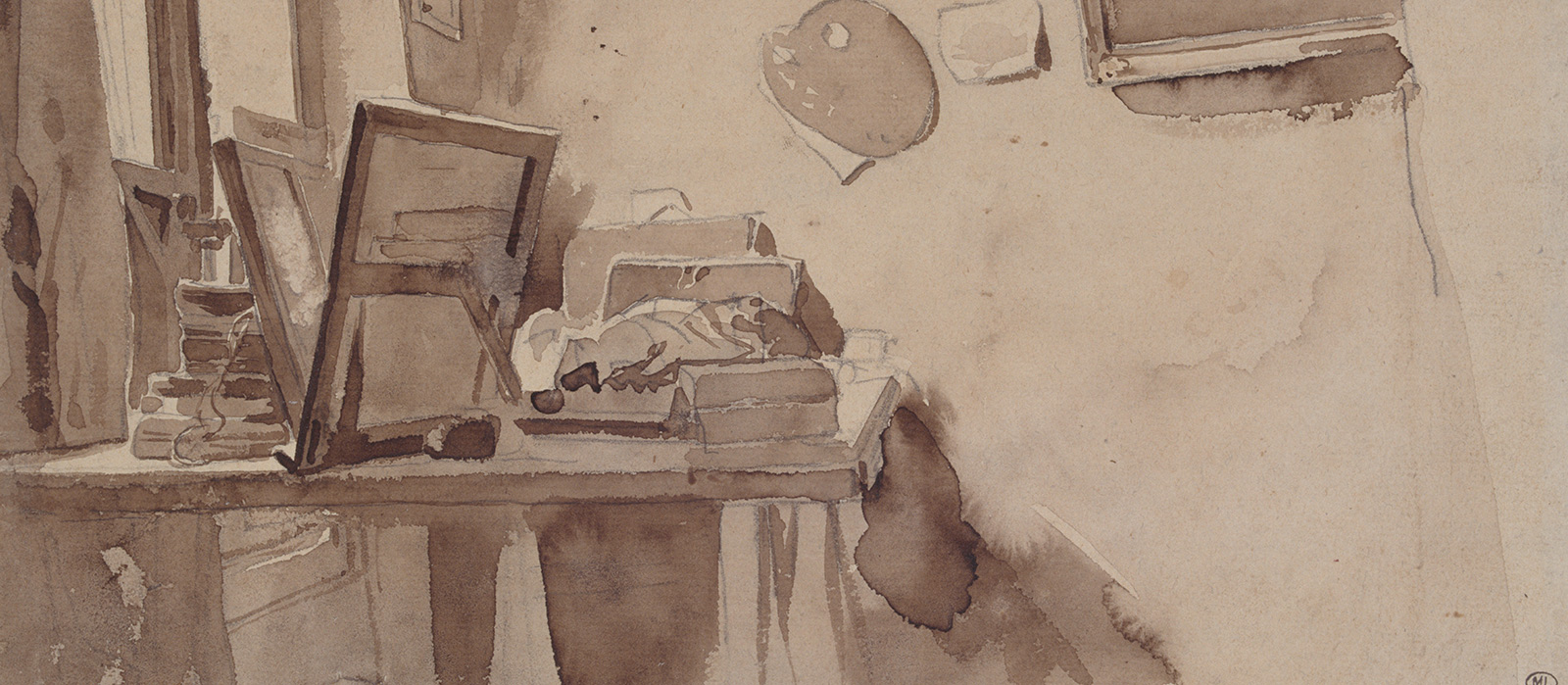What’s on
In the Studio
Creation at Work
May 15-September 30, 2019
Housed in the Romantic painter’s final studio, the Musée Delacroix is a place of memory. Thanks to the push by major artists of the 1920s to transform it into a museum, it is also a place of creation and a space for encounters. Devoted to the studio, and the metamorphoses allowed therein, the exhibition In the Studio: Creation at Work unveils Delacroix’s creative process, and shines a light on the importance, within these walls, of the artistic transmission that the museum’s founders wished to share with visitors.
The exhibition places Delacroix’s creative genius on display, revealing the sources to which he referred and the studies that he drew, painted or shaped, for an ensemble of selected works. In his studio, Delacroix kept the preparatory drawings and studies for all of his works. These are akin to notes that the artist could use for other compositions or projects.
Punctuated by works by 19th and 20th century artists, this exhibition is devoted to the artistic process. The artistic connections between Delacroix and a number of other artists are evoked, from Théodore Géricault to Jean-Baptiste Carpeaux, from Théodore Chassériau to Paul Gauguin. The exhibition notably opens with a presentation of the studio as a subject of artistic representation, showing depictions of studios by Delacroix himself, by Frédéric Bazille and Pablo Picasso, who admired him. Each section is organized around one or more themes dear to Delacroix, including paintings of wild animals, the myths of Medea and of Orpheus, the story of Ovid, depictions of “disembodied heads” and abductions, and illustrates the creative bond joining Delacroix to his peers and successors.
The exhibition benefits from exceptional loans from French and foreign museums, including the Musée des Beaux-Arts d’Orléans, the Palais des Beaux-Arts de Lille, the National Gallery in London, and the Kunsthalle Hamburg.
The invitation addressed to three French contemporary artists, Anne-Lise Broyer, Laurent Pernot and Jérôme Zonder, allows for deep appreciation of the development of this artistic conception. The presence of their works in Delacroix’s studio offers an opportunity to highlight the painter’s movement of creation. They bring out the dual quality of the studio-museum: as a historical site where one of the greatest artists of the 19th century lived; and as a space in which the complex alchemy of the creative act took place, and continues to do so.
Since 2014, the Musée Eugène-Delacroix has devoted its research program to the theme of the studio. Historical and museum-oriented, focused on the study of the past and analysis of the present, this program brings together the studio and the museum. This exhibition is thus the culmination of a reflection on the studio as a space of creation and memory, fully rooted in history.
Exhibition curators :Dominique de Font-Réaulx, director of the Interpretation and Cultural Programming Department, Musée du Louvre, Léa Bismuth, art critic, for the contemporary art.


